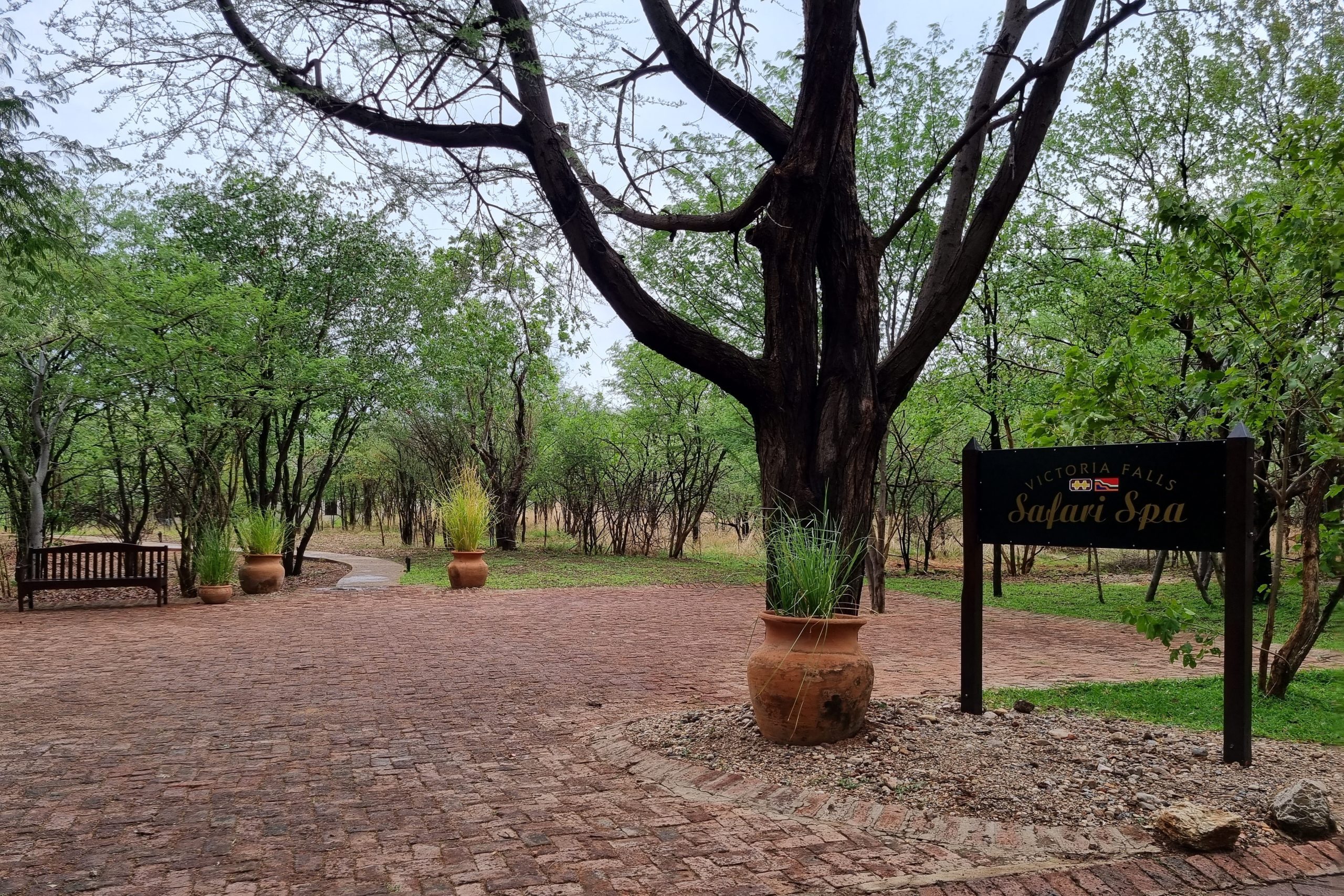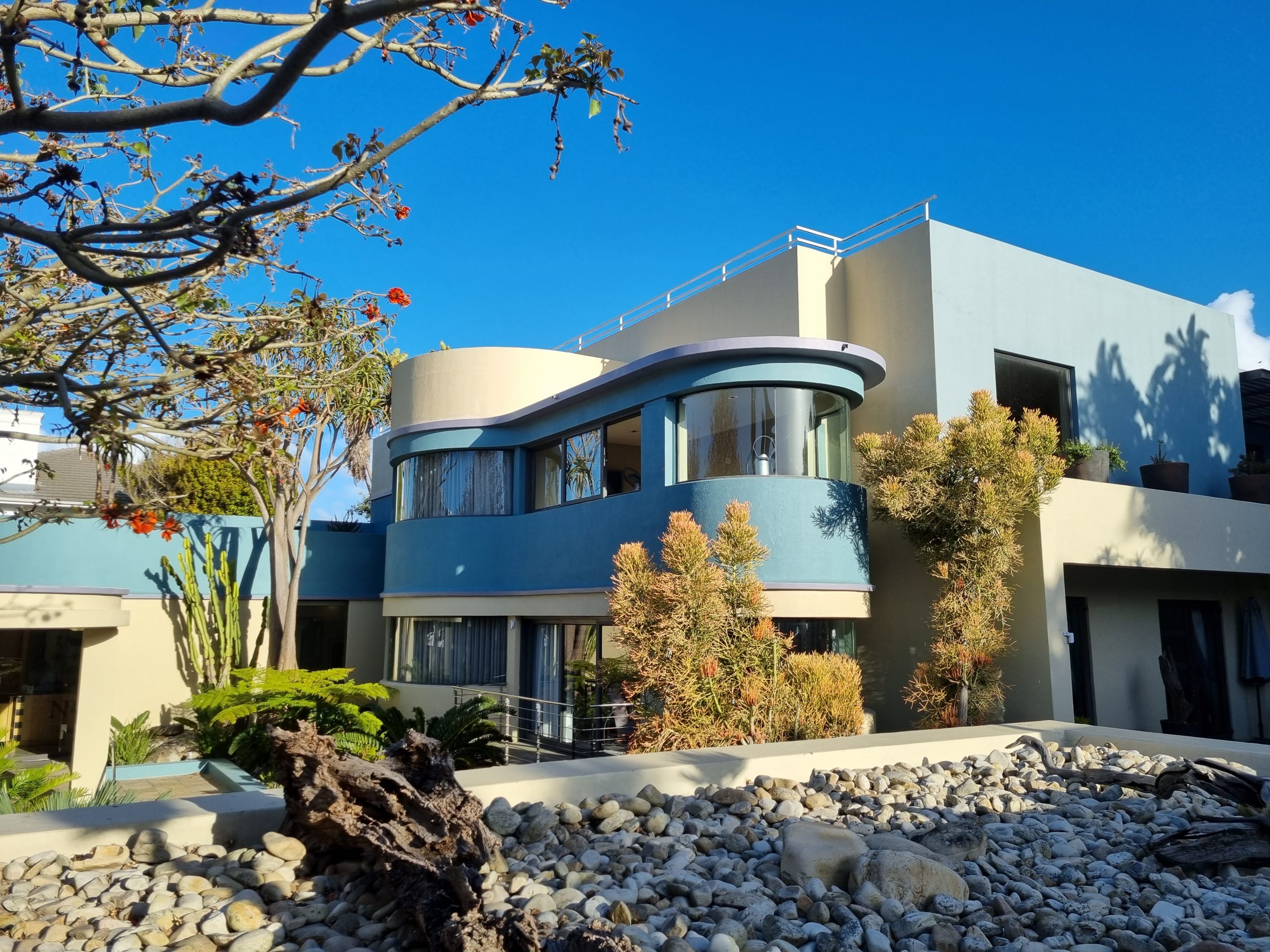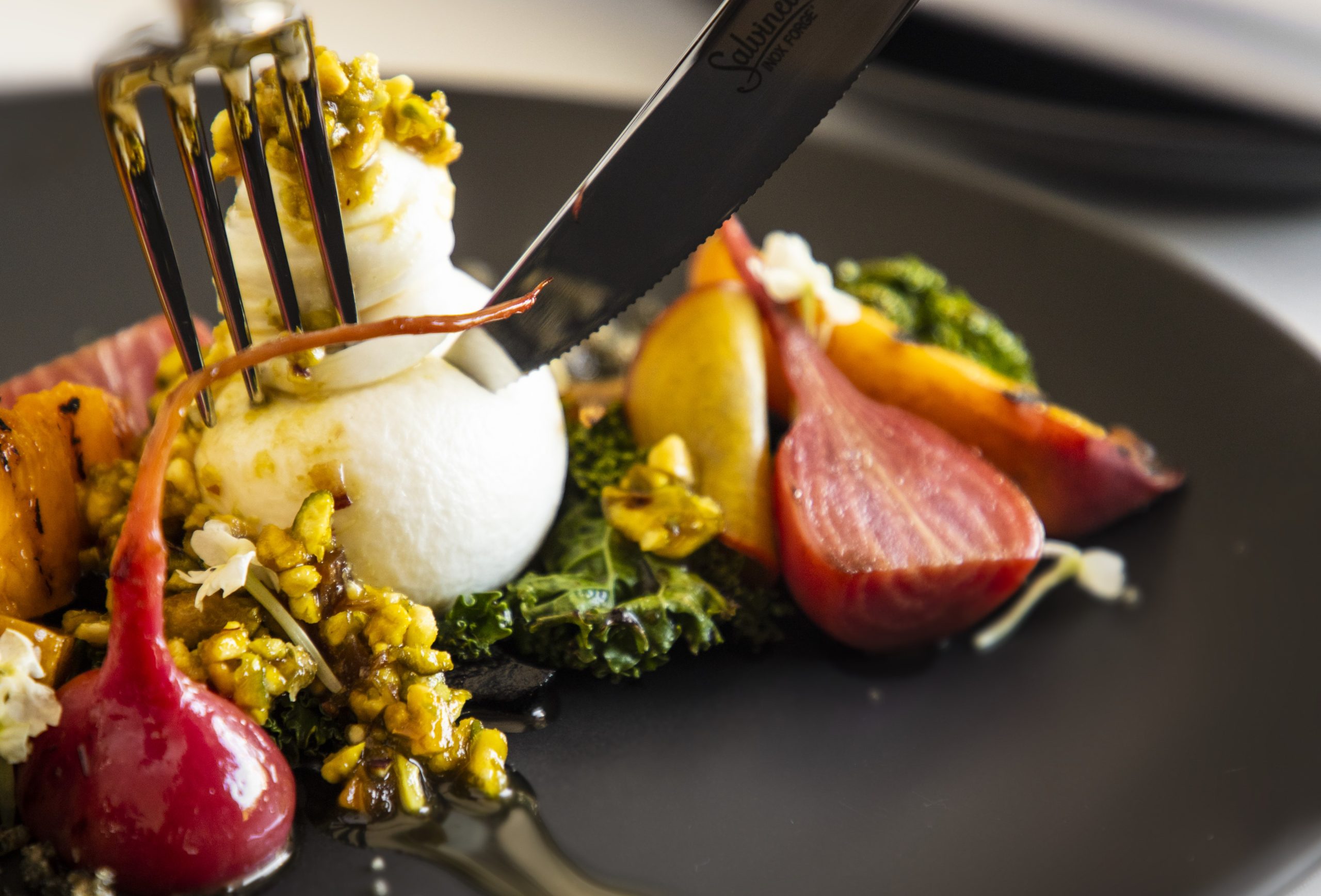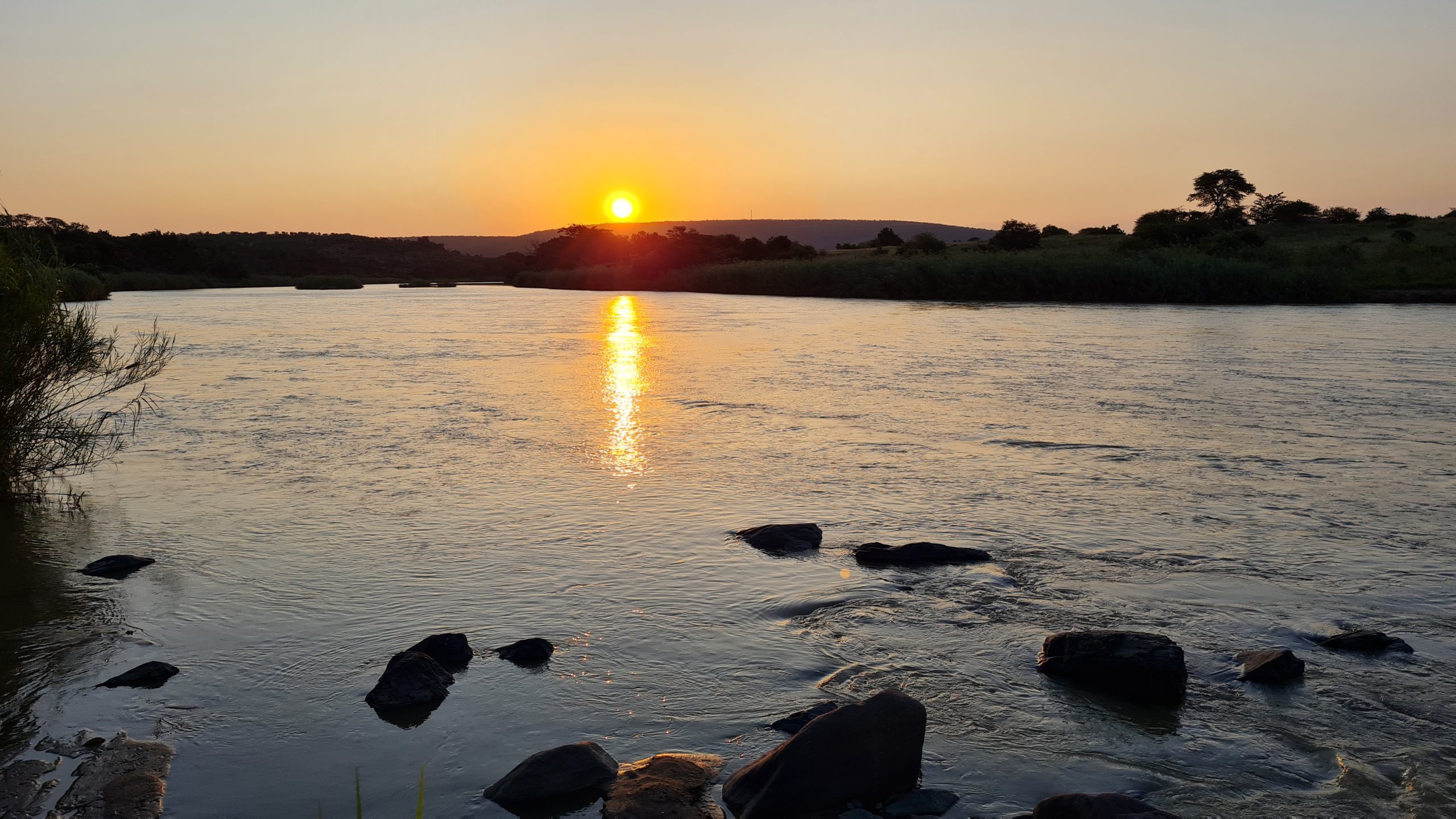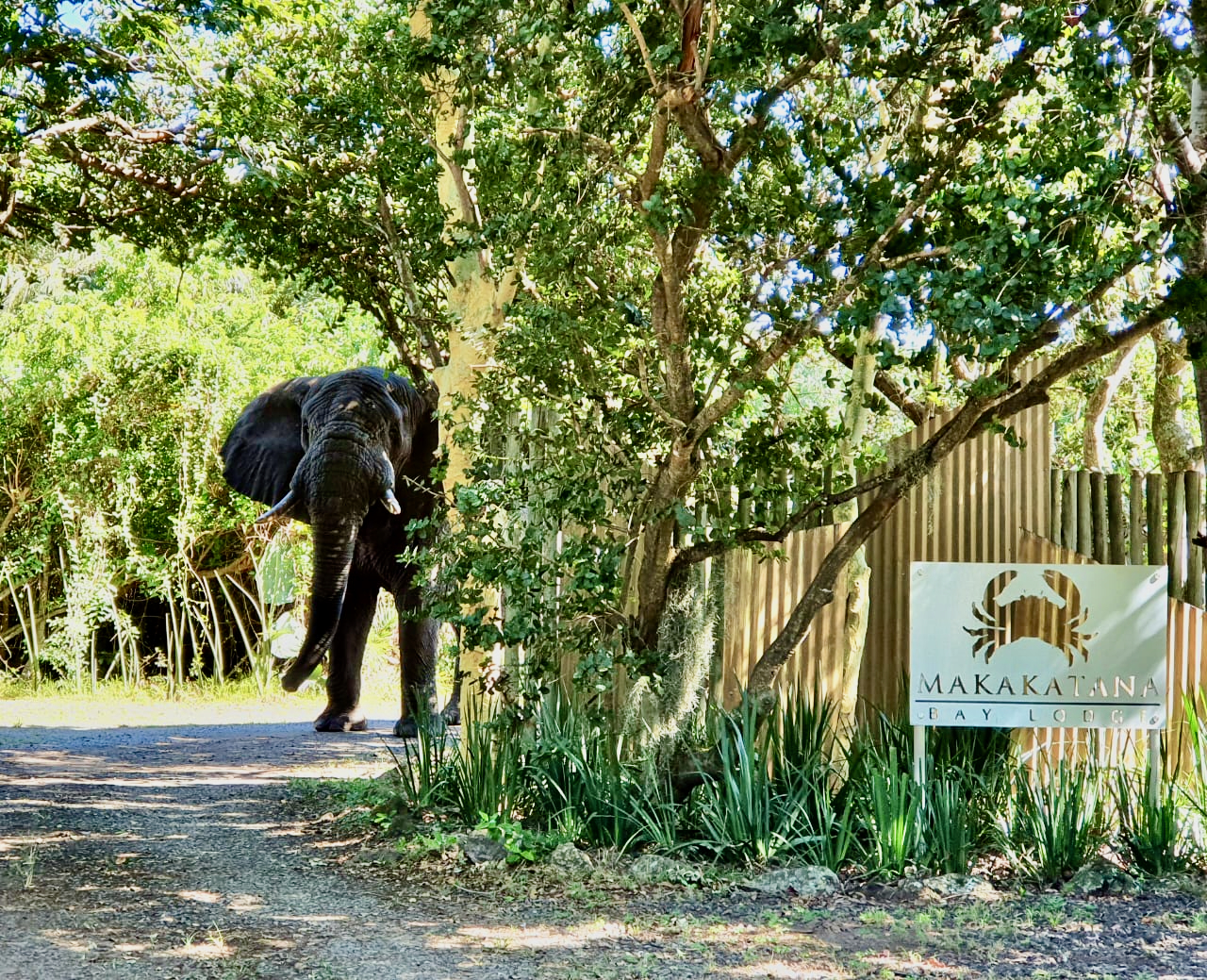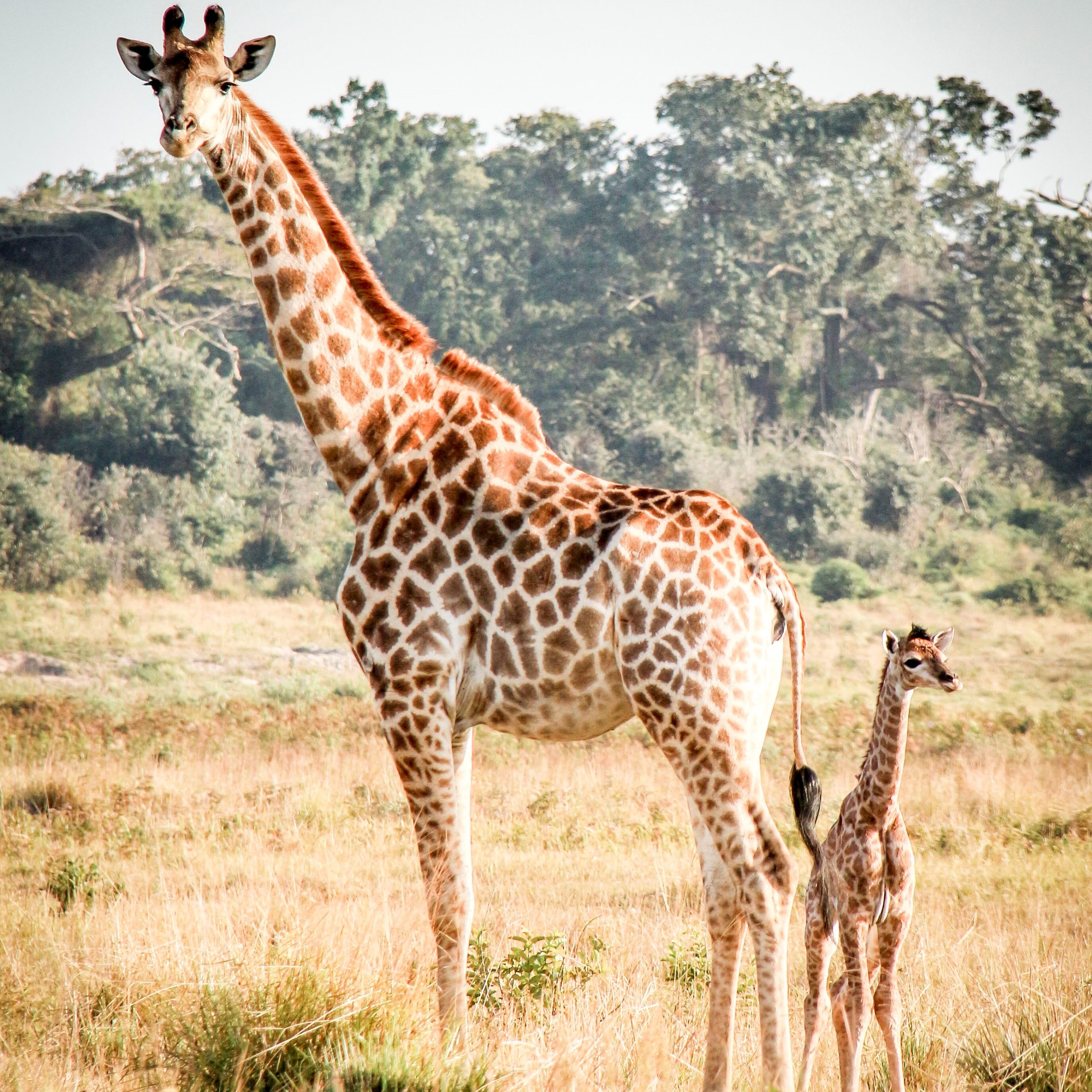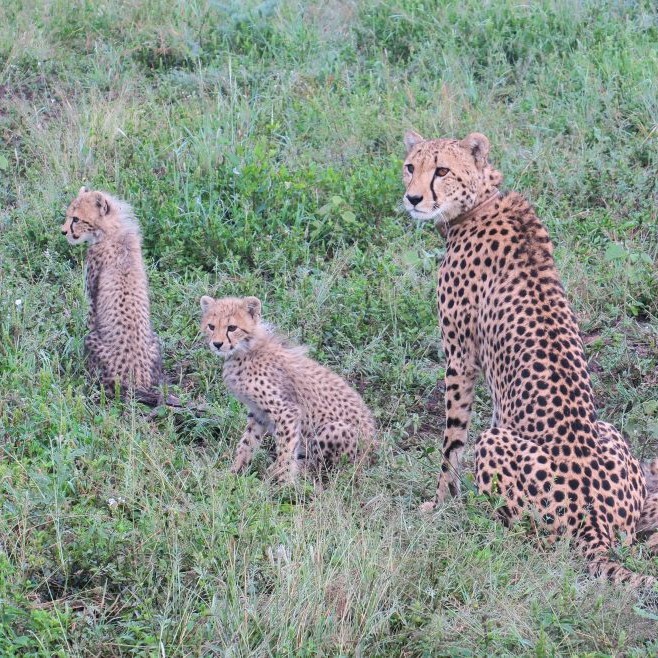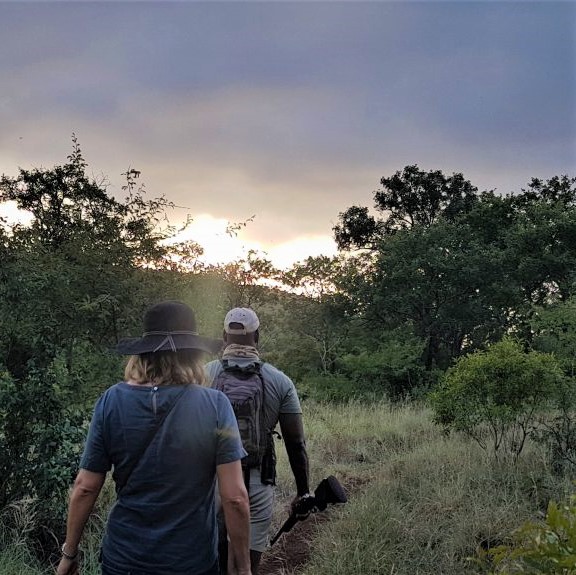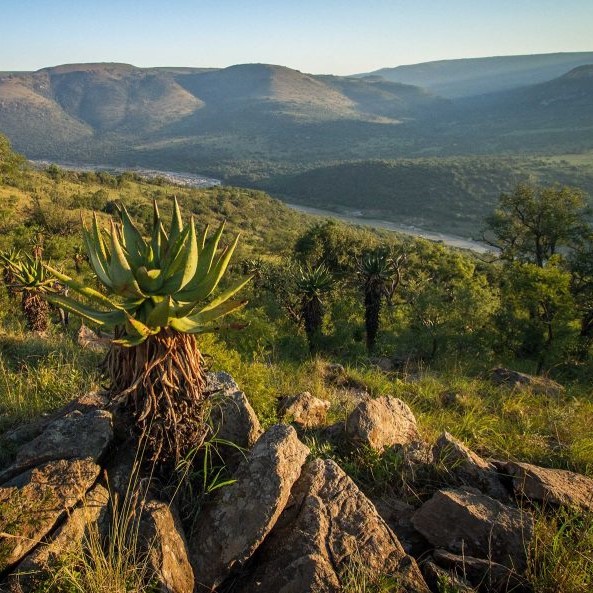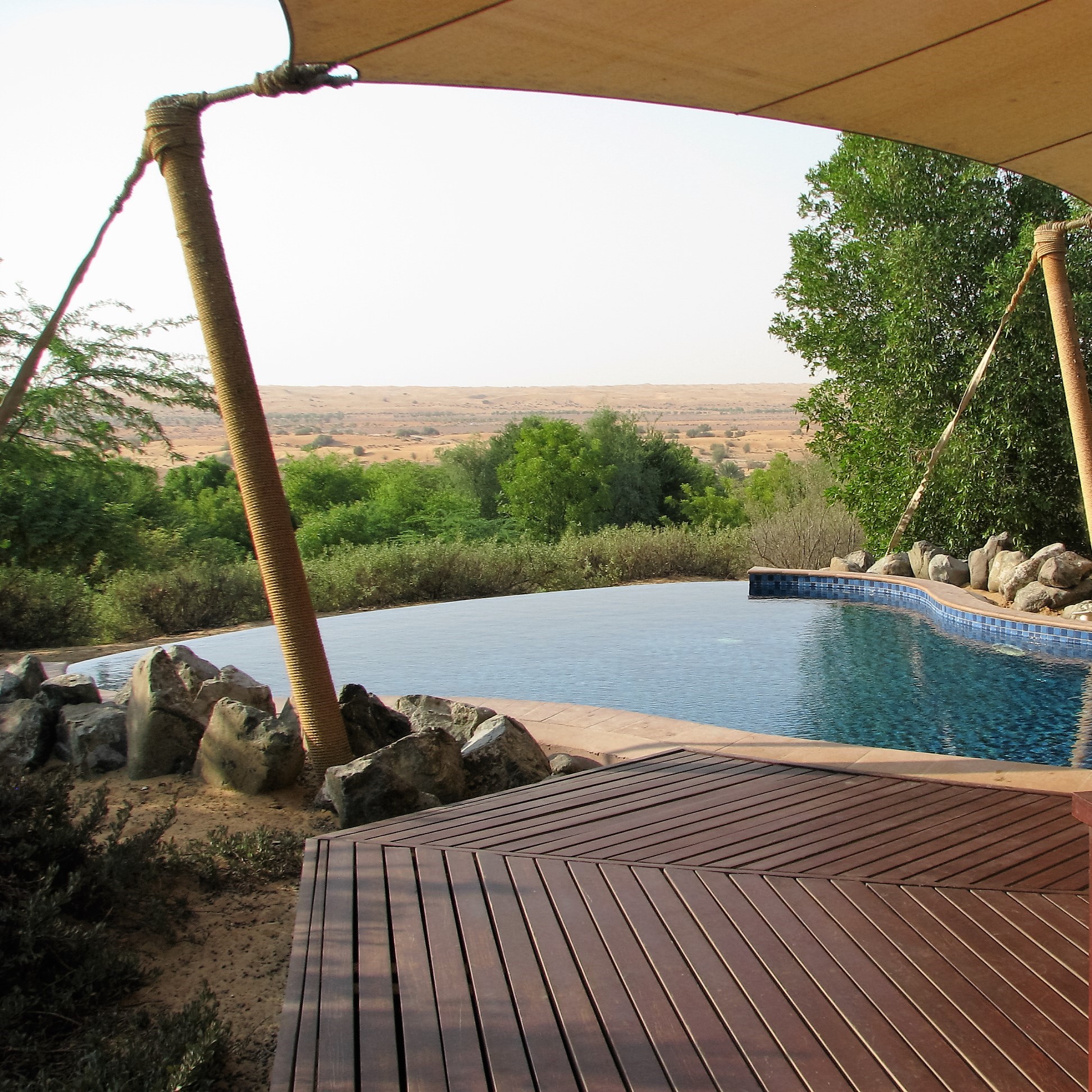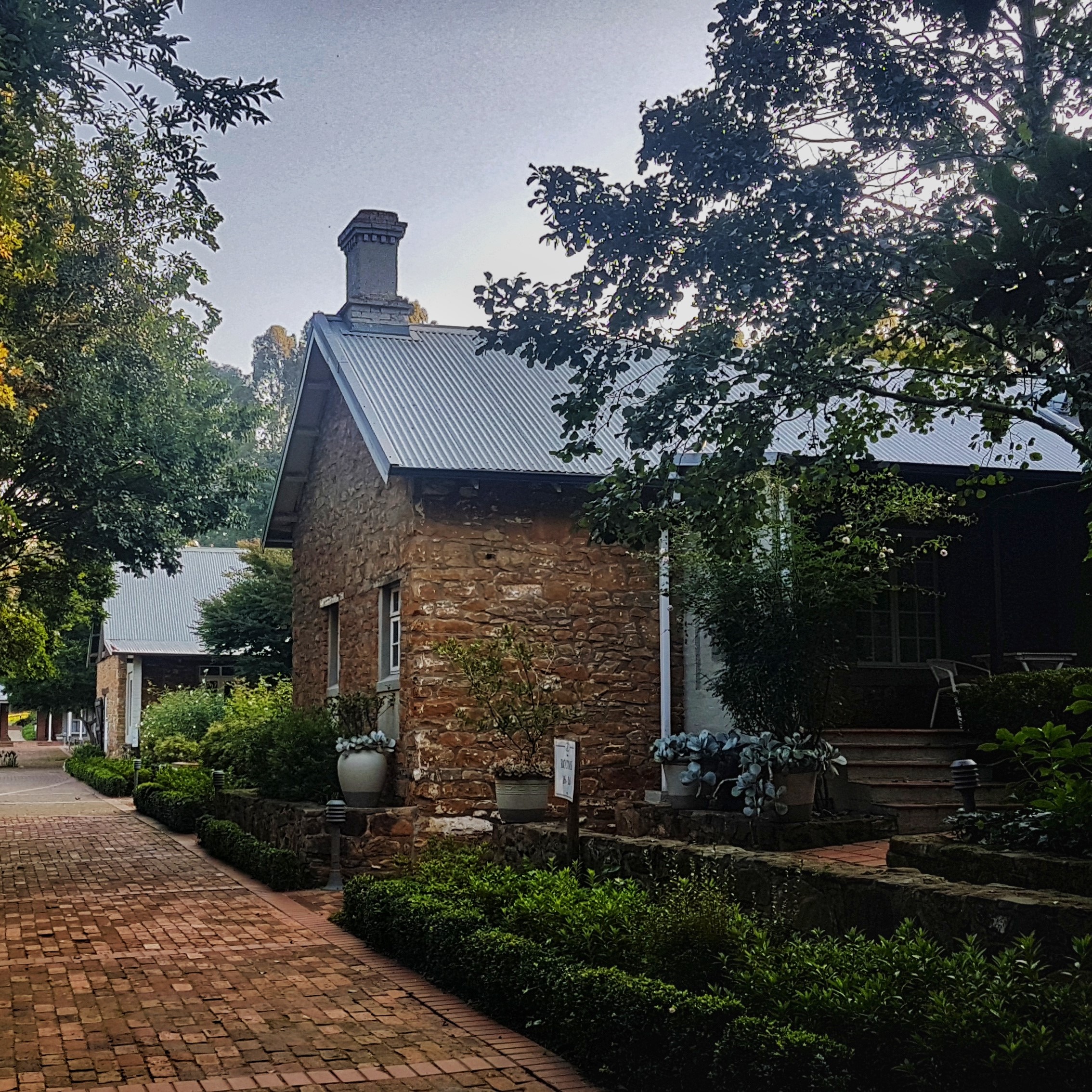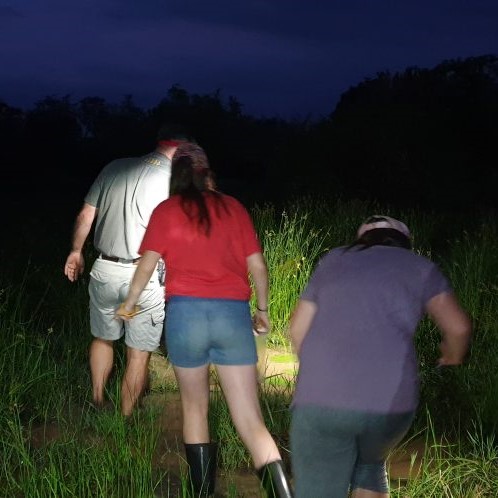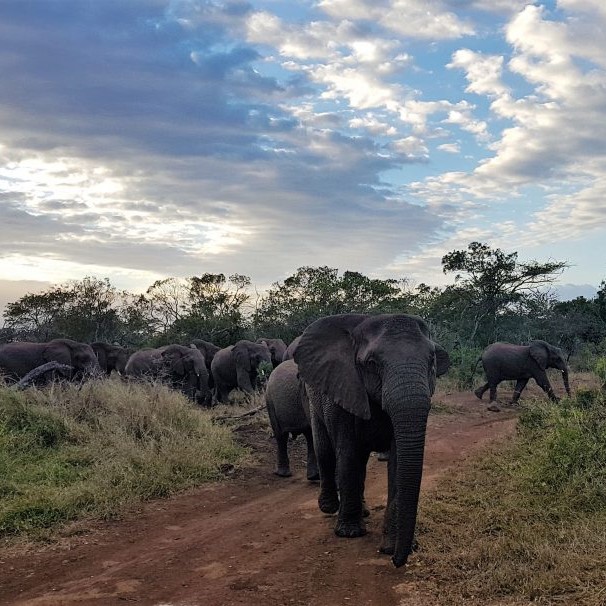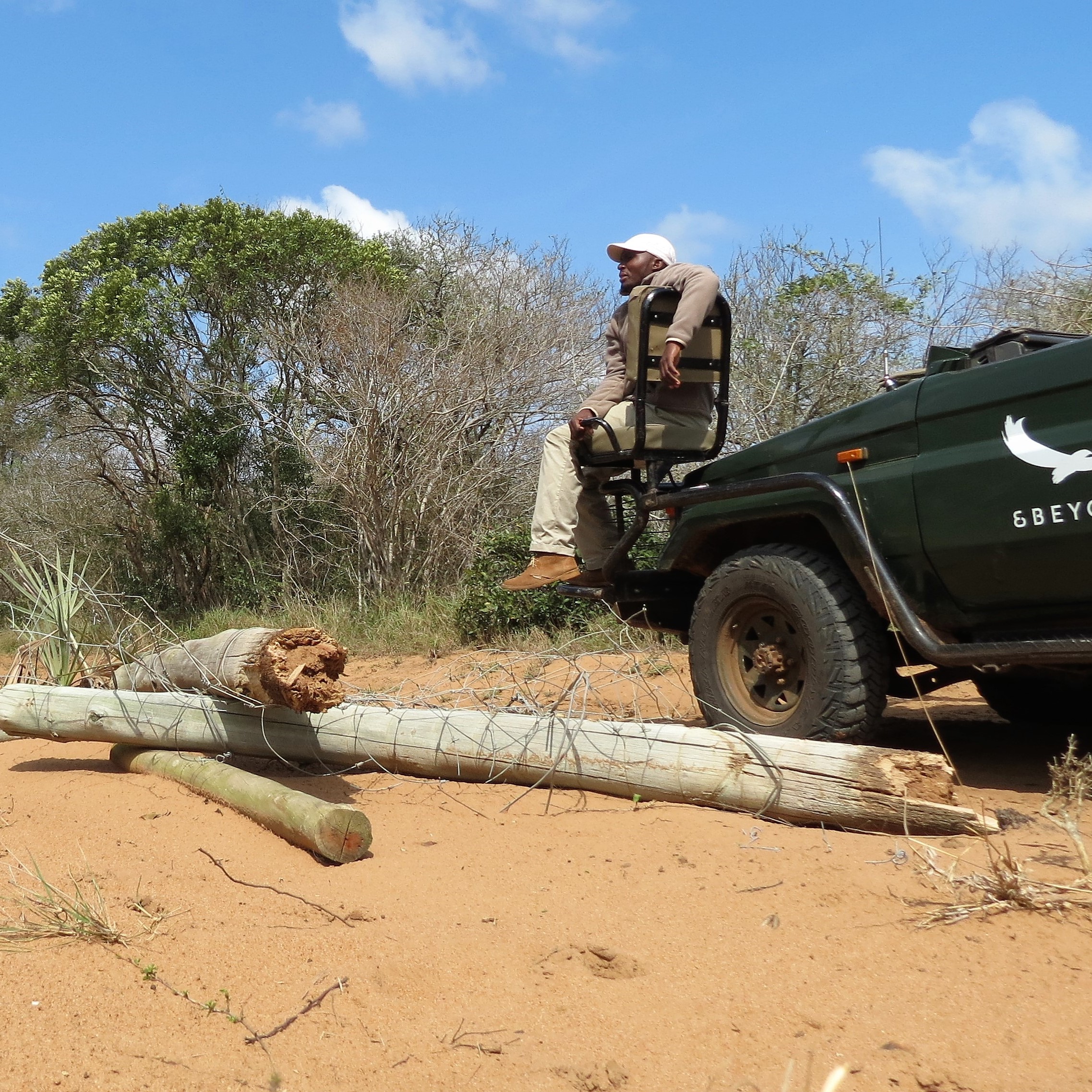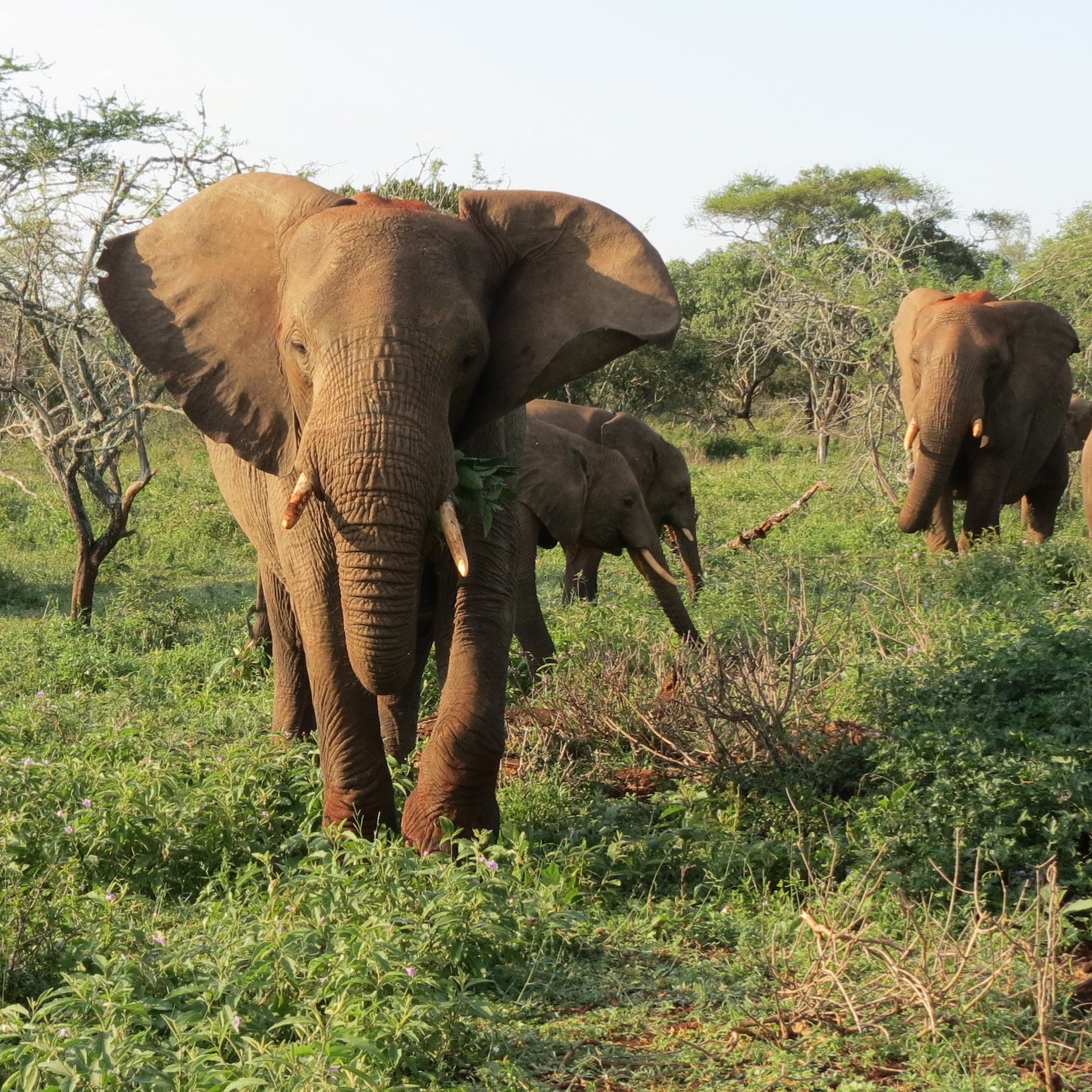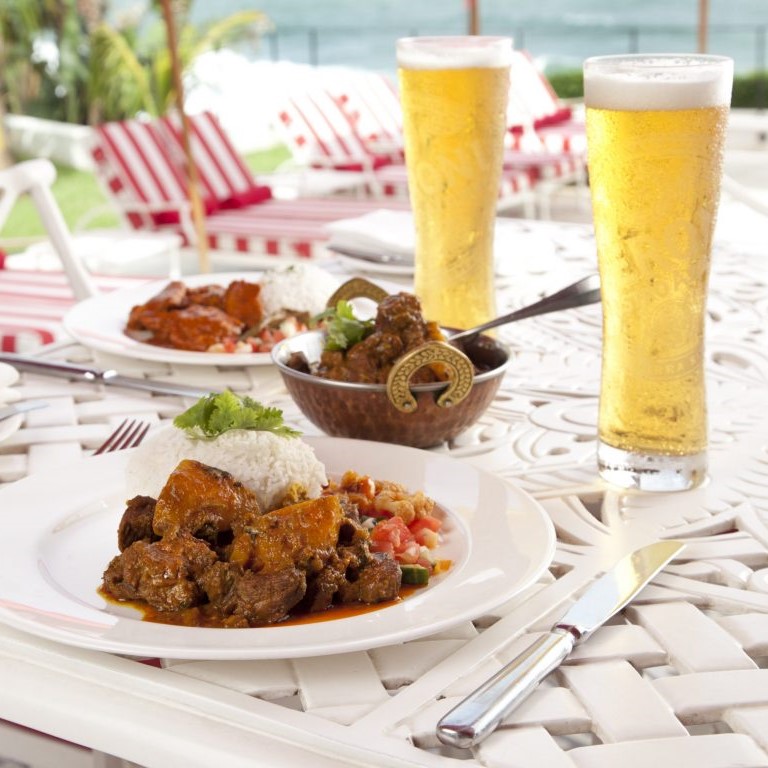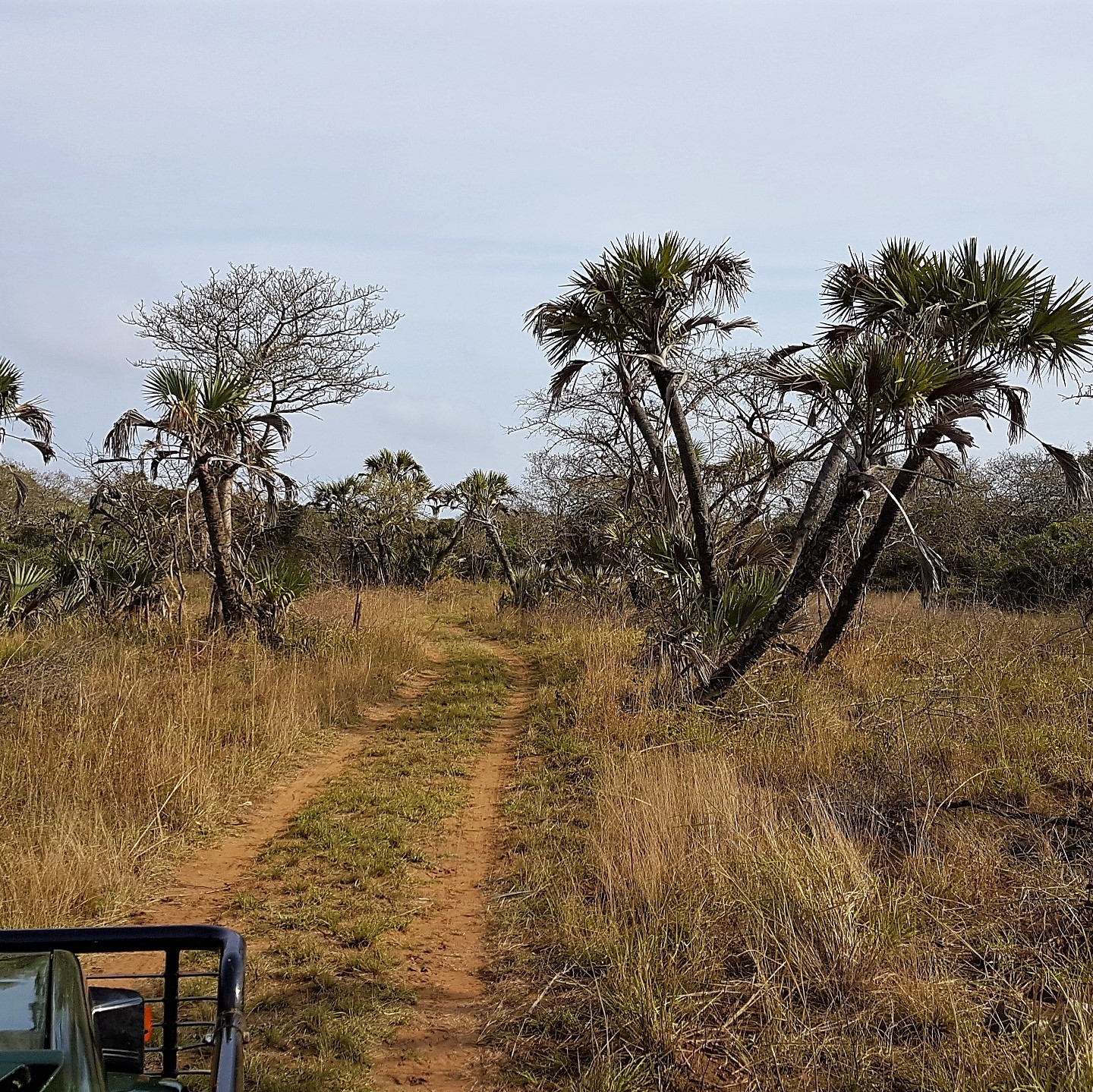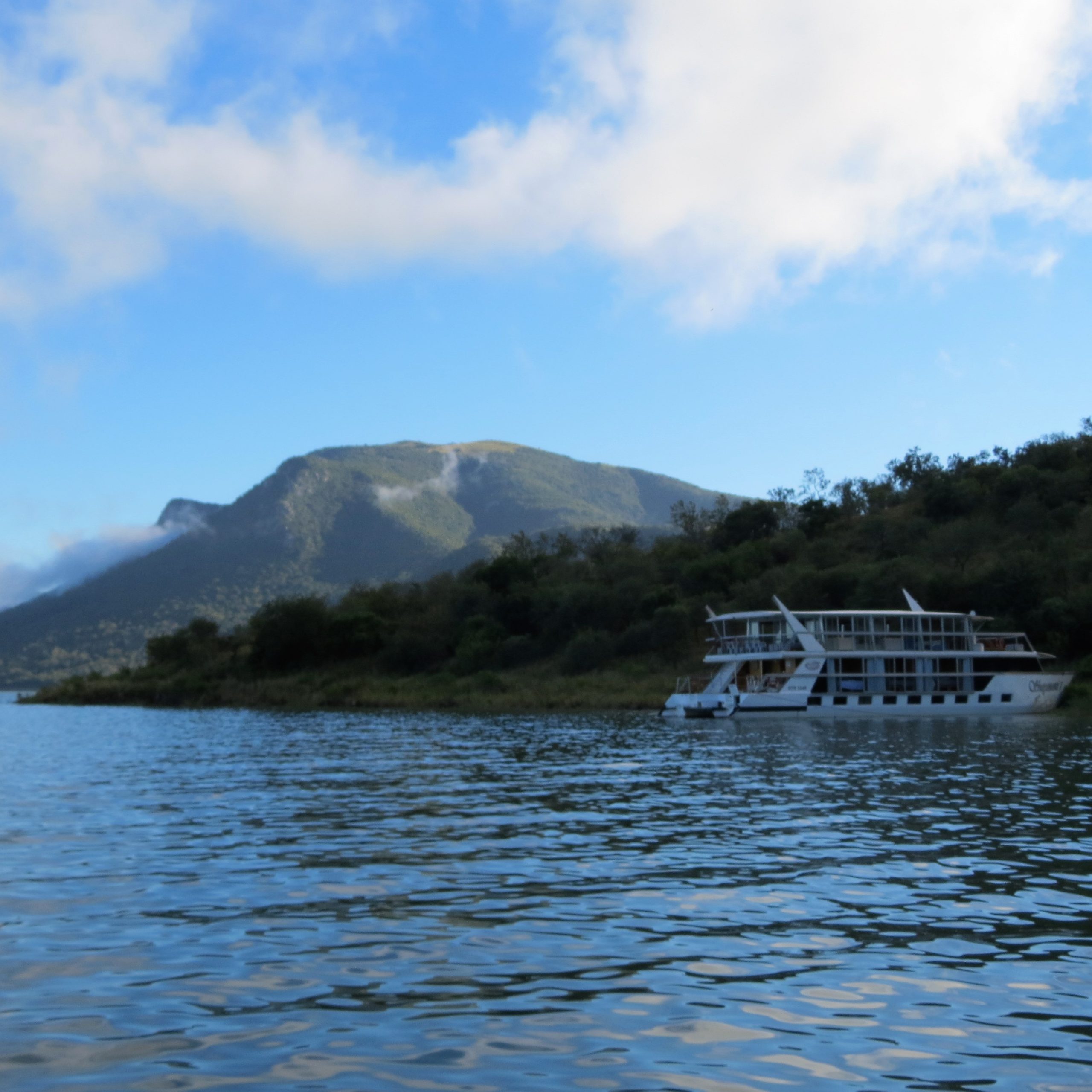KwaZulu-Natal is all about cultural diversity and multi-cultural traditions, sophistication and style, an enticing destination that invites exploration – an alluring and fascinating place, with spectacular mountain peaks, expansive golden beaches, exciting wildlife experiences, legendary Zulu kings and reminders of its Colonial past. Durban, gateway to the province, is a sophisticated cosmopolitan city, a fusion of East, West and African culture, which is reflected in the city’s architectural styles, artistic flair and culinary tastes and flavours.
Durban

GO SURFING – Durban offers world-class surfing waves right on its doorstep and classic beach break surf conditions can be found along the entire Durban beachfront
RIDE A RIKSHA – Rikshas were introduced to Durban from the East in the early 1900s to serve as a tourist attraction and as a quick-and-easy means of transport around the growing city. Today, a fleet of these two-wheelers pulled by men with colourful outfits and outlandish headgear still operates on the Durban beachfront
GO SCUBA DIVING – Aliwal Shoal is Durban’s prime diving destination. The reef has many gullies, overhangs, caves and shelves which are home to a vast array of marine life
LOOK OUT FOR DOLPHINS – Schools of Bottlenose Dolphins move up and down the coast all year round. Watch them frolic in the waves close to the shore.
ENJOY A STROLL THROUGH THE BOTANIC GARDENS – The Botanic Gardens, founded in 1849, is one of Africa’s oldest botanic gardens.
VISIT THE UMNGENI GREEN HUB – The Green Hub is Durban’s central portal for eco-tourism information and bookings. Based at the uMngeniRiver Estuary, the Green Hub offers and arranges canoe trails, mountain biking and nature and heritage trails in the area as well as throughout Durban.
EXPERIENCE NATURE – The coastal forests, mangrove swamps and river estuaries in and around Durban are rich in animal and bird life, as are the hills and valleys of the Valley of 1000 Hills.
GO CYCLING – enjoy the sunrise on a bike ride along the beach from uShaka to Blue Lagoon, or hit the trail at Giba Gorge or take a bike tour in Inanda to enjoy the views of the dam and get in touch with the local community.
EAT A BUNNY CHOW – No visit to Durban is complete without eating a ‘bunny’. Half a loaf of bread, hollowed out, and filled with curry. Cheap, delicious and filling, this is Durban’s most famous dish.
GO SHOPPING IN A MARKET – Durban is a shopper’s paradise, with pavement sellers selling arts, crafts and curios, street markets selling curries and spices, handmade curios and woven goods
TAKE A TOUR THROUGH THE MARKETS OF WARWICK – This includes the Victoria Street Market, a vibrant Indian Market with colourful stalls, fish market and curio outlets; the ‘Muti Market’, where herbalists sell traditional medicines and many other markets which sell everything from farm-fresh produce to religious goods and cooked animal heads.
ENJOY DURBAN’S RICH CULTURE – Durban’s people reflect a rich cultural diversity of African, Eastern and Western influences.
When the first Europeans settled in Durban in the 1820s, the Zulu people were already here. The Indian people arrived in the 1880s as indentured labourers to work in the sugar cane fields, and were followed by traders and business people from the East. Today Durban is a cosmopolitan African city, home to people from all over the world but retaining that strong African-Indian-European colonial heritage.
GO ON A TOWNSHIP TOUR – experience the vibrancy of the townships where you can meet local residents, visit a crèche and play soccer with the kids. Then enjoy a visit to a shebeen for a local beer and some shisanyama (barbequed meat).
VISIT GHANDI’S HOME – Mahatma Gandhi developed his philosophy of passive resistance at the Phoenix Settlement and his home has been turned into a monument dedicated to lasting peace and justice.
VISIT THE OHLANGE INSTITUTE – Founded by John Dube (the first president of the African National Congress), this is home to the site where Nelson Mandela cast his historic vote in South Africa’s first democratic elections in 1994.
STEP BACK IN TIME AT THE KWAMUHLE MUSEUM – Once the office of the notorious Department of Native Affairs, the KwaMuhleMuseum provides a vital link with the city’s apartheid past. Inside the building are a number of powerful displays that provide a fascinating insight into the life of South Africa’s then “second class citizens”.
THE UMHLANGA LIGHTHOUSE – This distinctive twenty-one metre high lighthouse, completed in 1954, is situated on the picturesque Umhlanga promenade. The Umhlanga Lighthouse has never had its own lighthouse keeper – its lights are operated from the nearby Oyster Box Hotel. The lighthouse controls are located in the hotel office where staff monitor the controls, and report to Portnet’s Lighthouse Service.
DO THE ‘BIG RUSH BIG SWING’ AT MOSES MABHIDA STADIUM – this is the world’s only stadium swing and the largest swing of any kind anywhere. Jump into the void 106 metres above the pitch and swing out in a huge 220 metre arc under the iconic arch.
ENJOY INDIAN CUISINE – having the largest population of Indians outside of India, this is the place to enjoy a good curry.
Pietermaritzburg and Midlands

WALK THROUGH THE PIETERMARITZBURG’S HISTORICAL CENTRE – enjoy the architecture and history of the town – one of the highlights is the City Hall, built in 1893. It is reputed to be one of the largest all-brick buildings in the southern hemisphere. The organ housed here is huge and is still used for recitals and concert recordings.
GET SPORTY – Pietermaritzburg and its surroundings offer a veritable feast of present-day experiences and is where the annual Dusi Canoe Marathon starts, and is the beginning or ending point of the world-renowned annual Comrades Marathon between Durban and Pietermaritzburg, which attracts about 20 000 participants, and the venue for many mountain biking events.
GET ARTY – Alexandra Park is the venue for Art in the Park, a large outdoor art exhibition, and Cars in the Park, a popular gathering of vintage cars.
VISIT THE MANDELA MUSEUM AND CAPTURE MONUMENT – this significant site is where the world’s most famous anti-apartheid activist, Nelson Mandela, was apprehended in 1962 while driving from Durban to Johannesburg.
DO THE MIDLANDS MEANDER ROUTE – this tourist route runs mainly between Howick and Nottingham Road and is a delightful shopping and browsing side-trip, including numerous antique shops, art galleries and arts and crafts studios with the potential of turning every visit into a truly memorable experience. Check out Fordoun, Brahman Hills & Granny Mouse…
GO FLY FISHING – the Midlands offers some of the best trout fishing waters in South Africa
DO ADVENTURE – the Karkloof Canopy Tour offers an exhilarating adventure whizzing through the treetops or go mountain biking through the forests and hills of the region. Or abseil the 107m drop down the HowickFalls.
GO WHITE WATER RAFTING – the magnificent Umkomaas River, said to be second only to the mighty Zambezi, offers an exhilarating experience
South Coast

GO SWIMMING – seven South Coast beaches have achieved 2012/2013 Blue Flag status for their commitment to excellence in the areas of safety, amenities, cleanliness and environmental standards, namely Umzumbe Beach near Pumula, Lucien Beach near Margate, Marina Beach at Southbroom as well as the Margate, Ramsgate, Southport and Trafalgar beaches.
GO SCUBA DIVING – scuba diving is a popular adventure activity with excellent deep-sea diving areas at Aliwal Shoal and Protea Banks, the resting place for a number wrecks. Wreck diving has added an interesting dimension to this kilometre-long underwater wonderland that has an abundance of soft corals, sponges, and hiding places, which have combined to attract over 1200 species of fish, as well as turtles, rays, sharks and whales. From July to December the Aliwal Shoal’s RaggieCave, Cathedral and Shark Gully – famed for their shark diving; is the congregation point for Ragged Tooth Sharks, where up to 60 sharks have been encountered at any one time.
GO GOLFING – this region is home to eleven of South Africa’s finest golf courses – nine eighteen- and two nine-hole golf courses, each offering both the serious and leisure golfer a variety of golfing challenges. Ten of the eleven are situated along the stunning 120 kilometre stretch of coastline with tropical vegetation and the warm Indian Ocean as the backdrop.
GO ADVENTURE – the spectacular kloofs and crags of the Oribi Gorge reserve, which at approximately 400m deep, offer a good dose of adrenalin and the opportunity to see these cliffs ‘up close’. Take the plunge with Oribi’s abseiling, zip-line or big swing.
EXPERIENCE THE SARDINE RUN – every winter, there is the phenomenon of the sardine run – millions of sardines migrate up the coast, accompanied by dolphins and other large fish and the thousands of sea birds which feed on them. Whether in the capable, experienced hands of an air- or sea- borne tour operator, or simply armed with the Sardine Hotline number plus a pair of binoculars and plastic tub the Zulu Kingdom’s annual winter Sardine Run is a unique experience that guarantees memories for a lifetime.
GO SURFING – the South Coast is blessed with plenty of swell and a string of points which create the perfect conditions for quality surfing waves.
Battlefields
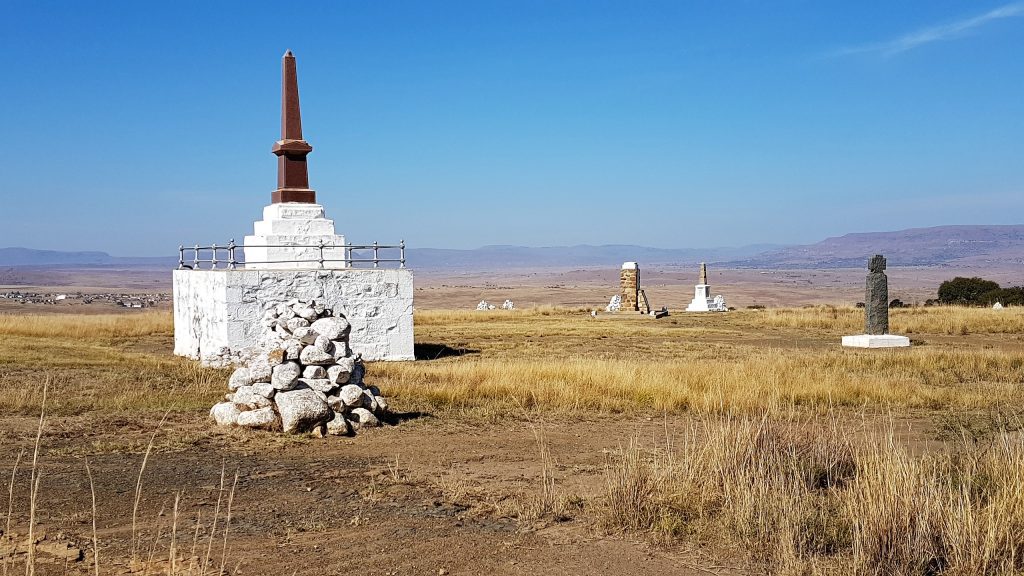
EXPLORE THE BATTLEFIELDS – with more recorded battlefields than anywhere else in Africa, this is the place to discover another facet of the Zulu Kingdom’s past. Battle sites include Isandlwana and Fugitives Drift as well as the Ladysmith, Colenso and Spionkop sites. Besides taking an organised tour, there are several self-drive routes established to enable you to visit these historic towns and sites. Knowledgeable, friendly and accredited local guides are available and guarantee hour upon hour of captivating company. The self drive Siege Salute Route has a high concentration of historical sites encompassing Anglo-Boer War and several Voortrekker- Zulu War sites.
GO BIRDING – the Amajuba Birding Meander offers a wide range of activities for birding enthusiasts, particularly for species where ‘grassveld meets the berg’. A whole range of species normally associated with grassveld, bushveld and mountain habitats are found in the Meander which is well known for its water birds.
GO WHITE WATER RAFTING – the uThukela River, the largest river in KwaZulu-Natal, offers excellent white water rafting in uThukela Canyon section of the river.
GO GAME VIEWING – Ithala Game Reserve. Combining excellent tourist facilities with superb game viewing and bird watching, this magnificent reserve, situated in the rugged, mountainous thornveld of northern KwaZulu-Natal, is a game viewer’s paradise. Ithala Game Reserve in the north is situated in rugged, mountainous thornveld and its multitude of habitats host a spectacular array of wildlife species. With terrain ranging from the heights of the Ngotshe Mountains to the deep Phongolo River valley, a thousand meters down, it reveals astonishing geological diversity and some of the oldest rock formations in the world, dating back 3 000 million years.
Drakensberg
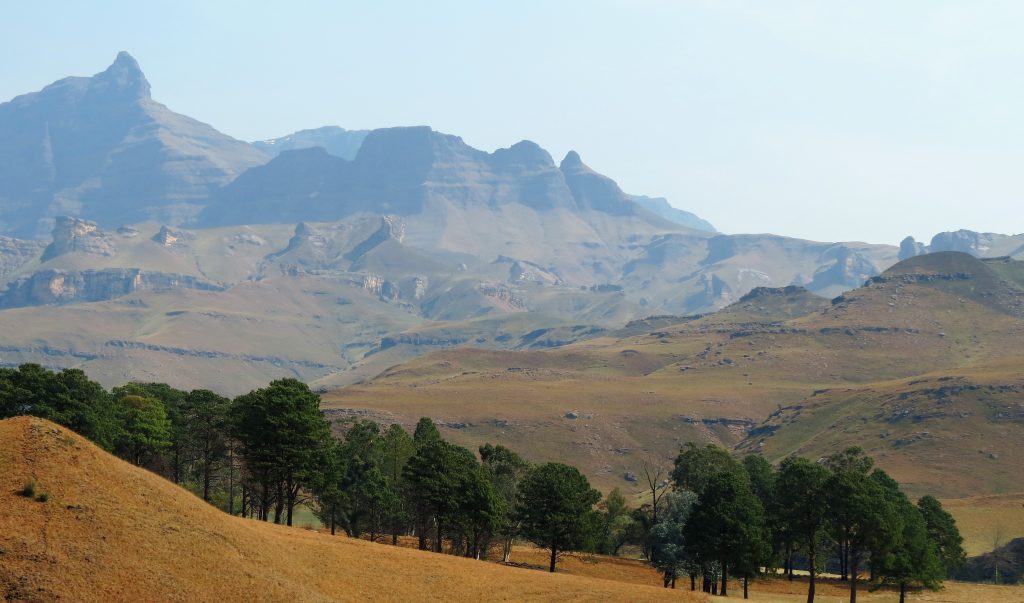
HIKE IN LOTENI NATURE RESERVE – which is renowned for its beautiful scenery, and is home to reedbuck, blesbuck, eland, bushbuck and oribi.
GO HORSE RIDING – experience the mountains on horseback. From hour-long rides in the foothills to a three-day expedition into Lesotho in the safe hands of a local guide and a sure-footed Basotho pony.
VISIT A VULTURE RESTAURANT – watch the enormous bearded vultures as they fly overhead before settling down to squabble over the pickings. At one time the vulture was a common sight, but due to habitat loss and sadly the poisoning of animal carcasses, both intentionally and unintentionally, their numbers declined dramatically. It was during the 1960s, as the decline in vulture numbers began to become obvious, that the idea of vulture restaurants became popular. A vulture restaurant provides wild populations struggling to survive with a concentrated, poison free and reliable food source.
SEEK OUT ANCIENT BUSHMAN ROCK ART – evidence of the San people who lived in the area long time ago. These paintings are one of the Drakensberg’s greatest cultural treasures, with some 20 000 individual rock paintings having been recorded at 500 different cave and overhang sites between Royal National Park in the north and Bushman’s Nek in the south. Eland are the animal most often depicted in the Bushman or San paintings and held a special place in the lives and ceremonies of the Bushman – symbolising all that is good.
GO KLOOFING IN THE INJASUTI VALLEY’S KONG CANYON – enjoy a series of wet and dry abseils, fantastic rappels down trickling waterfalls, dips in little pools and some bouldering to boot.
HIKE UP TO THE SOURCE OF THE UTHUKELA RIVER – watch as it plunges some 950 metres over the edge of the Mont-aux-Sources Plateau in spectacular fashion. This waterfall, the uThukelaFalls, is the second highest waterfall in the world and while you’re there, don’t forget to take a picture of the spectacular Amphitheatre, which is possibly the most photographed feature of this region.
TAKE TO THE TREES – get a bird’s-eye-view of the Central Drakensberg’s ‘Blue Grotto. The Drakensberg Canopy Tour is a sure way to experience the incredible majesty of ancient trees, rocky crags and if you’re lucky some of the endemic birds.
Elephant Coast
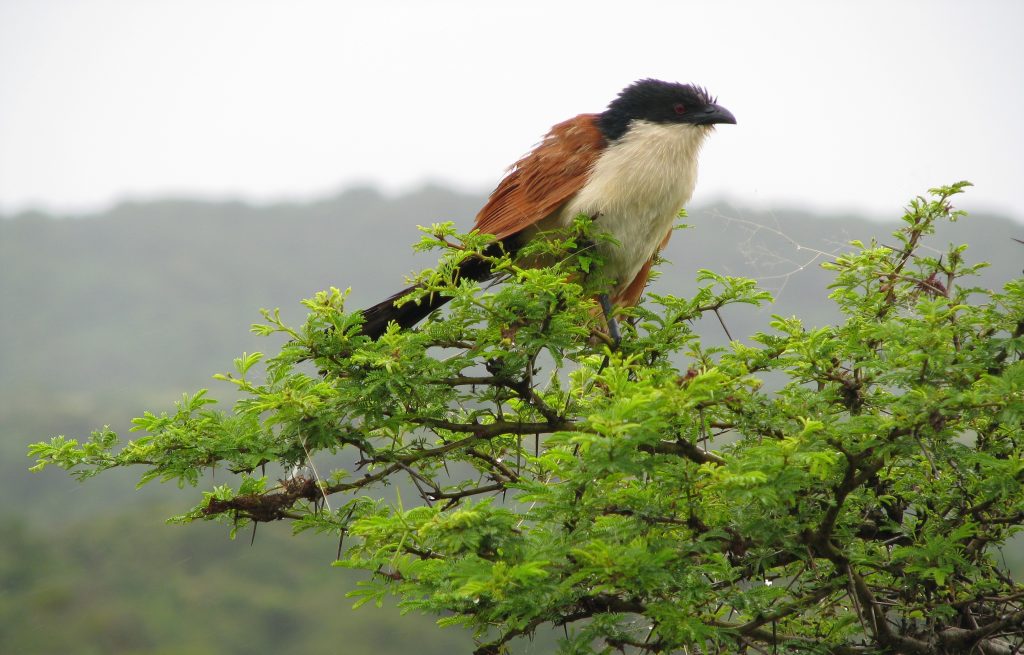
GO BIRDING – With this variety in habitats, it is little wonder that this region offers some of South Africa’s finest birding, with over 25 different birding spots and more than 500 species recorded (best during the summer months). Visit Ndumo Game Reserve, Mkhuze Game Reserve and the iSimangaliso WetlandPark. There are a number of Birdlife SA accredited establishments offering friendly service and great hospitality, often offering a packed brunch for early morning twitchers, as well as bird lists, reference material, information on birding in the area and local guides. These guides assist birders with their excellent observation skills and finding the ‘specials’ of a specific birding site, this not only adds value to any birding outing, but is an income generating opportunity for community guides.
GO DIVING – Sodwana Bay, situated within the World Heritage Site of the iSimangaliso Wetland Park, is world-renowned for exquisite diving and is ideal for both shark diving and reef diving all year round, providing divers from around the world with an amazing opportunity to explore the World Heritage Site’s unmarred coral reefs, home to a grand diversity of sea life.
GO GAME VIEWING – South Africa’s first proclaimed World Heritage Site, and Africa’s oldest game reserve, the Hluhluwe iMfolozi Park is credited with saving the once endangered white rhino, but it is also home to many species of antelope as well as large populations of elephant, buffalo and giraffe and predators such as the lion, cheetah and the elusive leopard. Or one of the areas private game reserves such as Phinda and Amakhosi Safari Lodge
GO RHINO TRACKING – enjoy the privilege and excitement of tracking the endangered black rhino on foot.
GO WHALE-WATCHING – Visiting whales migrate through the waters off the southern most section of the iSimangaliso Wetland Park between the months of mid May to mid December annually. They choose the warm waters of the Indian Ocean, to calf and breed and an ideal way to observe these creatures of the deep is on a boat based whale watching charter.
GO TURTLE-TRACKING – Witness the extreme effort and determination of Giant Leatherback and Loggerhead turtles as they come ashore during the summer months to lay heir eggs in carefully prepared nests. A few selected lodges in the Maputaland Marine Reserve offer guests the privilege of a turtle tracking experience – watch in awe as these giants of the sea emerge from the Indian Ocean to complete their breeding cycle. The pristine beaches in the region are the nesting ground of sea turtles that come to shore from October and December to lay their eggs – and March. Witness the extreme effort and determination of Giant Leatherback and Loggerhead turtles as they come ashore to lay their eggs in carefully prepared nests, often on the exact beach that they themselves hatched from. Accompany a resident turtle expert on a research drive to help monitor the turtles’ behaviour and nesting numbers. Due to the sensitivity of these magnificent creatures, every precaution is taken to ensure that they are not disturbed during the laying process. Seeing a 750kg turtle haul herself up the beach to complete her egg laying, and then utterly spent, drag herself back into the ocean must rate as an ‘exceptional safari experience’.
GO KAYAKING – Kosi Bay Nature Reserve is an unspoiled nature reserve surrounding the rare and beautiful Kosi Bay lake system. It has been incorporated into the iSimangaliso Wetland Park. The 11,000ha, 30km-long reserve is a tropical paradise of crystal clear water, marshland, swamp and coastal forests that is home to about 250 species of bird. Kayak hire is widely available at Kosi Bay and Kosi Forest Lodge, the only private lodge in the nature reserve, offers guided kayaking adventures for guests staying at the lodge. A Kosi Forest Lodge experience fulfills all this…
North Coast

VIEW THE BARN SWALLOWS – an estimated three-million Barn (European) swallows breed in Europe and travel to southern Africa where they stay from October until April roosting in the Mount Moreland reedbeds. The huge number of birds landing to roost at dusk and leaving to forage at dawn makes for a spectacular natural event best viewed from the Lake Victoria Conservancy in Mount Moreland.
VISIT THE KING SHAKA GRAVESITE AND MEMORIAL – located in the town of KwaDukuza, formerly Stanger, which was established in 1872 on the site of the former Dukuza a settlement of King Shaka and the site of his assassination in 1828. Also here is the strat of the King Shaka Cultural Heritage Tourism Trail, in honour of the heritage that King Shaka left behind.
THE MOREWOOD MEMORIAL GARDENS – located in Verulam, they commemorate the life and work of Sir Edmund Morewood, who grew the first commercial sugar cane in South Africa and was the founder of the South African sugar industry. When his first crop of sugar cane reached maturity in 1851, he made the first sugar ever produced in this country, in a primitive factory which once stood where the garden now lies. The picturesque garden provides an interesting heritage site which has been designated National Monument status.
Zululand
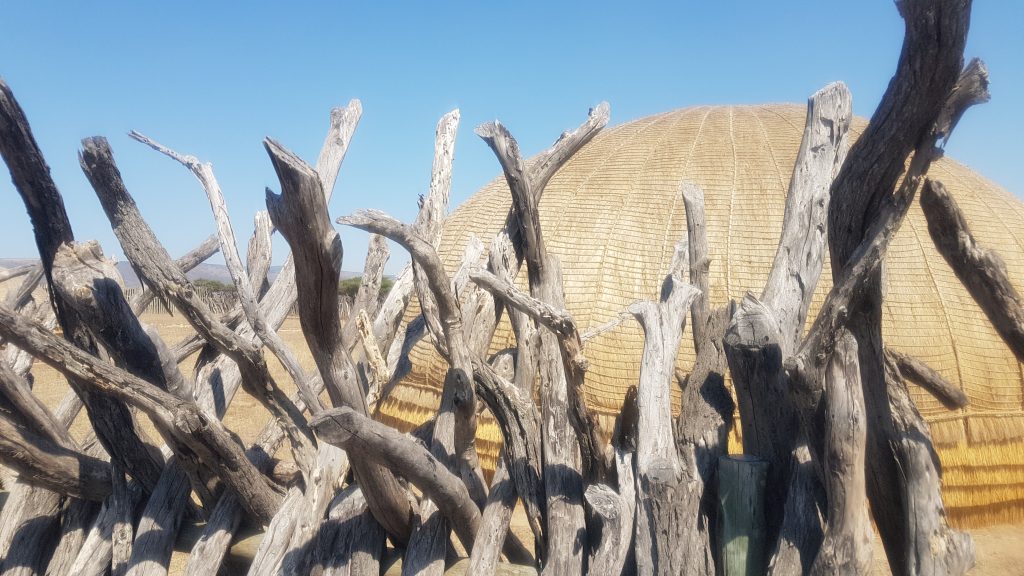
LEARN ABOUT TRADITIONAL ZULU MEDICINE – accompany a traditional healer into the nearby forest to collect herbs, bulbs, and bark. Listen as he explains how he harvests and prepares the traditional medicines for use on both human and animal patients – these age-old traditions are still practiced on a daily basis, many of which are the foundation of modern pharmaceuticals.
EXPERIENCE ZULU CULTURE – be welcomed into the family homestead (Umuzi) and share a fresh and wholesome meal cooked the traditional way. Perhaps take a sip of the traditional beer as it is passed around. Dancing and singing is very much a part of the lifestyle of the Zulu people, and it is a privilege to be invited around the communal fire to experience traditional Zulu dancing at its best.
EXPLORE ROUTE 66 – and’s Heritage Route, between Gingindlovu and Phongolo, follows one of the oldest trade routes through Zululand. In the early 19th Century, settlers would set off from Port Natal in their ox-wagons on well-worn tracks along the coast and cross the Thukela River into the heart of the Zulu Kingdom. Settlers where required to obtain permission from the king before heading inland to hunt and trade in his territory. Following in these same paths soon after were missionaries, transport riders, soldiers, colonial administrators, police, settlers and farmers. This route has been witness to immense changes and terrible conflict – clan against clan and kingdom against kingdom. The wagon tracks have long since made way for modern infrastructure but today’s visitors can still get a sense of how things used to be on Route 66.
GO TIGER FISHING – situated within the Pongola game reserve and at the foot of the Lebombo Mountain range, the beautiful Lake Jozini, also known as the Pongolapoort Dam, is the only place in South Africa where tiger fishing is readily available.
GO BIRDING – The Dlinza Forest is currently visited by birdwatchers from all over the world hoping to catch a glimpse of one of the many bird species to be found there. The Dlinza Forest Aerial Boardwalk is built in the 250-hectare forest reserve and it is the only indigenous forest completely surrounded by an urban setting. The 125-metre boardwalk, at an elevation of 10 metres, allows visitors to walk right under the canopy of Dlinza’s indigenous scarp forest and culminates in a 20-metre observation tower with a breath-taking view. The walkway, which is wheelchair friendly, provides intimate access to 65 bird and 85 butterfly species, as well as to small mammals such as red duiker, bush pigs and bush babies. The Ongoye Forest is home to the endemic Ongoye Red Squirrel, numerous special plants and invertebrates as well as being the only place in Southern Africa to see Woodwards’ (Green) Barbet. Other “green” specials include Green Twinspot, Green Malkoha, Olive Woodpecker, Olive Bush-Shrike and Emerald Cuckoo. Samango monkeys, baboon, mongooses, thick-tailed bushbaby and the secretive blue duiker can be seen. The Zululand dwarf chameleon, a localised KwaZulu Natal endemic, is abundant at Ongoye and the forest green butterfly Euryphene achlys is unique to this forest.



